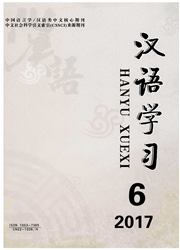

 中文摘要:
中文摘要:
“看来”、“看似”、“看样子”在词汇化程度、虚化程度和主观性强度上都有差异,这和三者的构成及观察特征有关。“看来”以非视觉性的观察为主,虚化程度最高,主观性最强,主要表达认知主体的推断;“看似”以视觉性观察为主,虚化程度最低,主观性最弱,侧重表达认知主体的观感;“看样子”的虚化程度和主观性强度介于两者之间,以表推测为主,观察也以视觉性&非视觉性为主要特征。此外,三者的主观性表现也各不相同。
 英文摘要:
英文摘要:
There are some differences among "kanlai", "kansi" and "kan yangzi" in lexicalizafion degree, bleaching degree and subjectivity. And this is related to their sources of construction and characteristics of observation. With highest degree of bleaching and strongest subjectivity, "kanlai", based on invisual observation, expresses mainly inference of cognition. On the contrary, "kansi" expresses mainly impression of cognition with lowest degree of bleaching and weakest subjectivity. "Kan yangzi", whose bleaching degree and subjectivity are between the two above, expresses mainly guess and its observation shows visual and invisual characteristics.
 同期刊论文项目
同期刊论文项目
 同项目期刊论文
同项目期刊论文
 期刊信息
期刊信息
